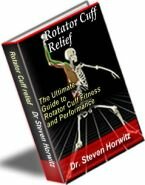Posture: Sitting and Standing
PROPER STANDING POSTURE
How to Stand in Balance
It is wise to know how to conserve energy and avoid fatigue while standing. This is particularly so for those who have to work in the standing position most of the day. Standing in balance facilitates economy of movement, thereby reducing fatigue and the frictions that produce aches and pains in joints and muscles. It activates those muscles which should be at work holding the body erect, thereby helping to keep them in tonic condition.
Standing in balance calls for the proper distribution of the weights of the body through the correct alignment of the body parts. The muscles must be so controlled as to assure this alignment.
Eight Steps in Assuming the Balanced Standing Position
- Place both feet parallel, a few inches apart, big toes pointing straight ahead.
- Slowly draw the buttock and Adductor muscles (inner thigh muscles) tightly together.
- Press toward the ball of each foot and hold the body weight evenly distributed on both legs.
- With the muscles in front of the thighs (quadriceps), pull up both kneecaps.
- From the small of the back (lumbar region), with the long muscles, slowly stretch the back straight upward. Draw yourself up toward the "crown" of the head.
- Simultaneously, gently move the chin slightly forward until it is held at right angles to the front of the neck.
- From the center of the upper back, with the shoulder blade muscles (rhomboids and trapezius), slowly draw the shoulder blades back and down until they are flat and held together.
- Let the arms hand loosely at the sides.
This standing position should be used to guard the body throughout the day. You can use it when you stand waiting for a train, bus, elevator or while talking with another person. It is the most restful standing position, for the body is not held rigid, yet it is in perfect balance with all muscles functioning properly.
Quoted directly from LOOK BETTER, FEEL BETTER
by Bess Mensendieck, MD, 1954
PROPER SITTING POSTURE
How to Sit in Balance
Ordinarily, we sit in a chair to rest the body while at work, while we dine and when we relax the mind- by reading, for example. Whether the body actually is being rested depends upon the way we sit, the way we use the chair. Furthermore, the way we sit affects the shape and health of the body.
Find your sitting bone in this way:
- Sit toward the front edge of a chair without arms or padding.
- Let your feet rest flat on the ground.
- Hold your back straight.
- Slide your left hand, palm upward, under your buttocks on the left side; that is, between the buttocks and the chair. Place your right hand similarly.
- Move the fingers until you feel a bony ridge pressing against the fingers. This bony ridge is the sitting bone.
- Now rock the trunk forward and backward on the sitting bone. Sense how the pressure on the fingers increases and decreases depending upon the position of your trunk. When the pressure on the fingers is greatest you are using the proper point on the sitting bones for balancing the trunk. It is comparable to the exact spot on the rocking chair which will balance it and thus hold it steady.
The reason this exact point on the sitting bone is so important is that the position of the back, shoulders, chest and abdomen depend upon it. With the weight of the body directed to this point, the pelvis is held erect and the trunk weight above it may be maintained in the correct, balanced position.
Eight Steps in Assuming the Balanced Sitting Position
- Place both feet flat and parallel on the ground a few inches apart. The pressure should be directed at the area back of the big toe including the big toe joint.
- Use the proper sitting bone position as described above.
- Hold the knees parallel. With the legs bent, have the knees face straight forward and about three inches apart.
- Press lightly onto the ball of each foot, and onto the sitting bones.
- Draw the head and trunk up tall and straight. With the long back muscles, slowly stretch the spine straight upward toward the center of the head.
- Hold the chin at right angles to the neck.
- Gently draw both shoulder blades toward the middle of the back.
- Let the arms hang loosely at the sides.
While at first it may require attention to sit this way, gradually sitting in balance will become automatic. The pillowed easy chair, the source of so much damage to your body, may even lose its attraction for you.
From LOOK BETTER, FEEL BETTER
by Bess Mensendieck, MD, 1954
|
The Ultimate Nutritional Lie Detector Test LEARN MORE 
|
Kettlebell Rehab

Click Here
To See How Kettlebells will transform your body!
Vortex Rehab

Click Here
To See How This
Revolutionary Machine
Can Help You!
Partner / Support

Loans up to 3 months - fast cash advances for up to 90 days and up to $5,000!


















